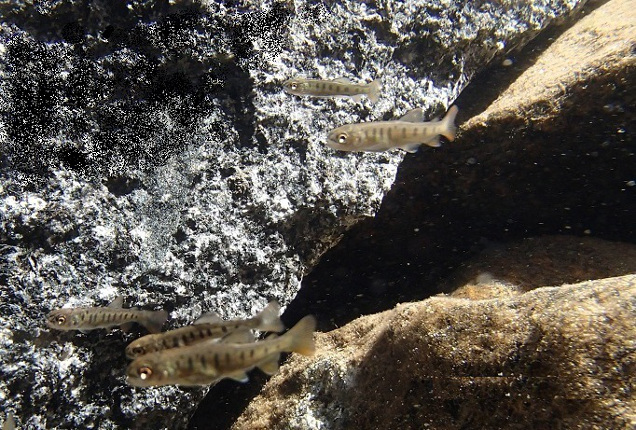It has been some time since Pass—or Norns—Creek has received any improvements for fish habitat, but that changed last year thanks to the Okanagan Nation Alliance (ONA). With funding from the Fish & Wildlife Compensation Program and support from Columbia Basin Trust, the Regional District of Central Kootenay (RDCK), and Colville Confederated Tribes, numerous fish habitat structures were repositioned or maintained for improved public safety; a large rip-rap bank was stabilized; and fish habitat was added. And the work is not finished yet.
“Plans are in-place to establish a riparian area along an open section of streambank bordering the Pass Creek Fairgrounds in spring 2016,” says Amy Duncan, ONA Columbia Region Biologist. “We will plant a variety of native tree and shrub species as recommended in the RDCK Parks Management Plan. Maintaining continuity with the existing riparian area along Pass Creek will provide additional structure to the bank and overhanging vegetation, providing shade and nutrients to the stream, as well as habitat and food for wildlife in the area.”
Pass Creek provides extremely important spawning and rearing habitat for Columbia River Rainbow Trout, Kokanee, and Mountain Whitefish. In 2011, for example, nearly 800 Rainbow Trout redds (gravel fish nests) were identified over the two-plus kilometre stretch of creek bed from its mouth to an impassable waterfall upstream, which acts as a fish barrier.
During the late 1990s and into the 2000s, rock structures and log jams were constructed to provide cover for fry and juveniles, but now those habitat structures need maintenance and rehabilitation to improve and restore their effectiveness.
To help the effort, in summer 2015, the ONA with key support from RDCK in the form of staff and materials, placed geotextile fabric and a rip-rap at two locations along the creek bank, together with rock groins and boulder clusters in the creek to provide holding and escape cover areas for the young –of-the-year and juvenile fish. The boulder clusters allow young fish to escape predators by creating eddies and current breaks, which enable them to avoid the faster currents and help them save energy.
Volunteer support was also provided by the Columbia District Wildlife Association, which helped remove spikes, nails and frayed cable that had become dislodged from old large wood debris structures.
“We are really pleased to be supporting this type of fish habitat restoration work,” says FWCP Columbia Region Manager, Crystal Klym. “Our Board has prioritized such on-the-ground or in-stream projects, and the fact that there is community involvement is a great bonus.”
FWCP Financial Contribution to this Project in 2015-2016: $27,500


